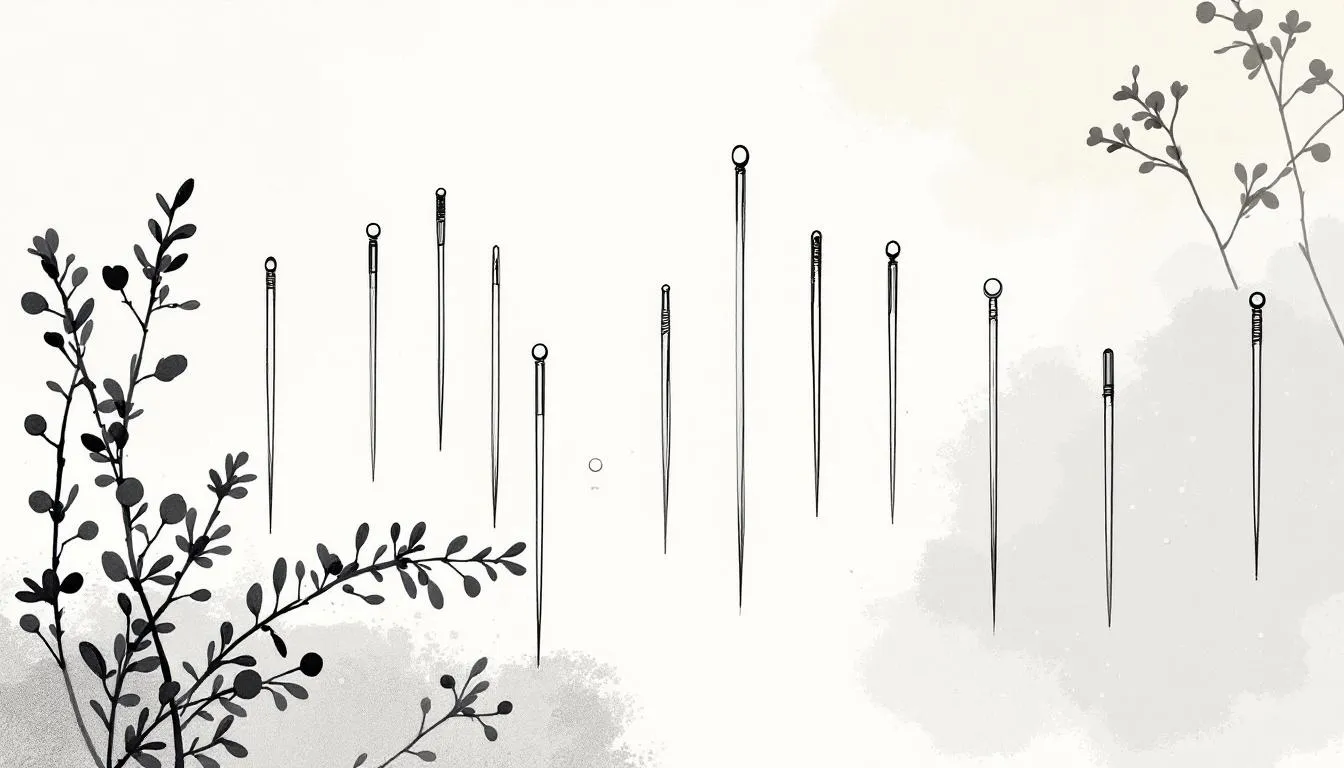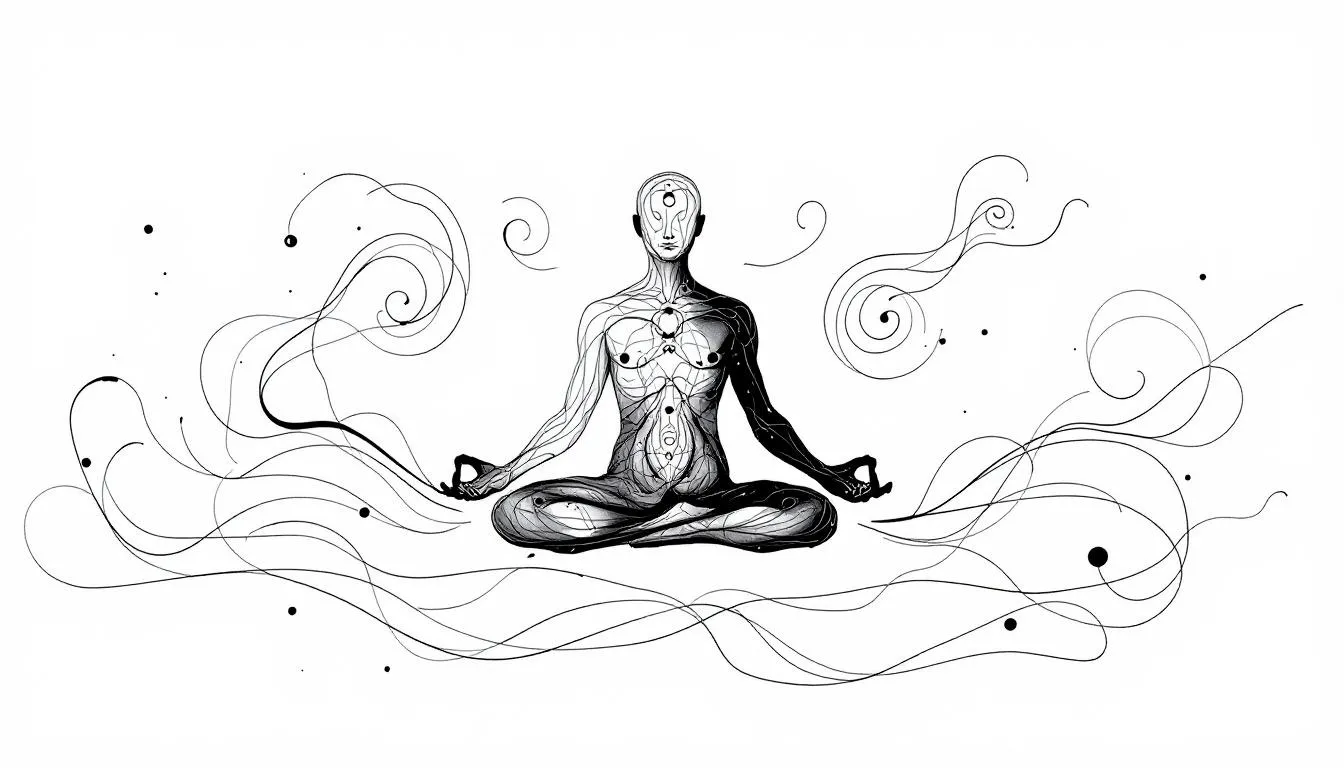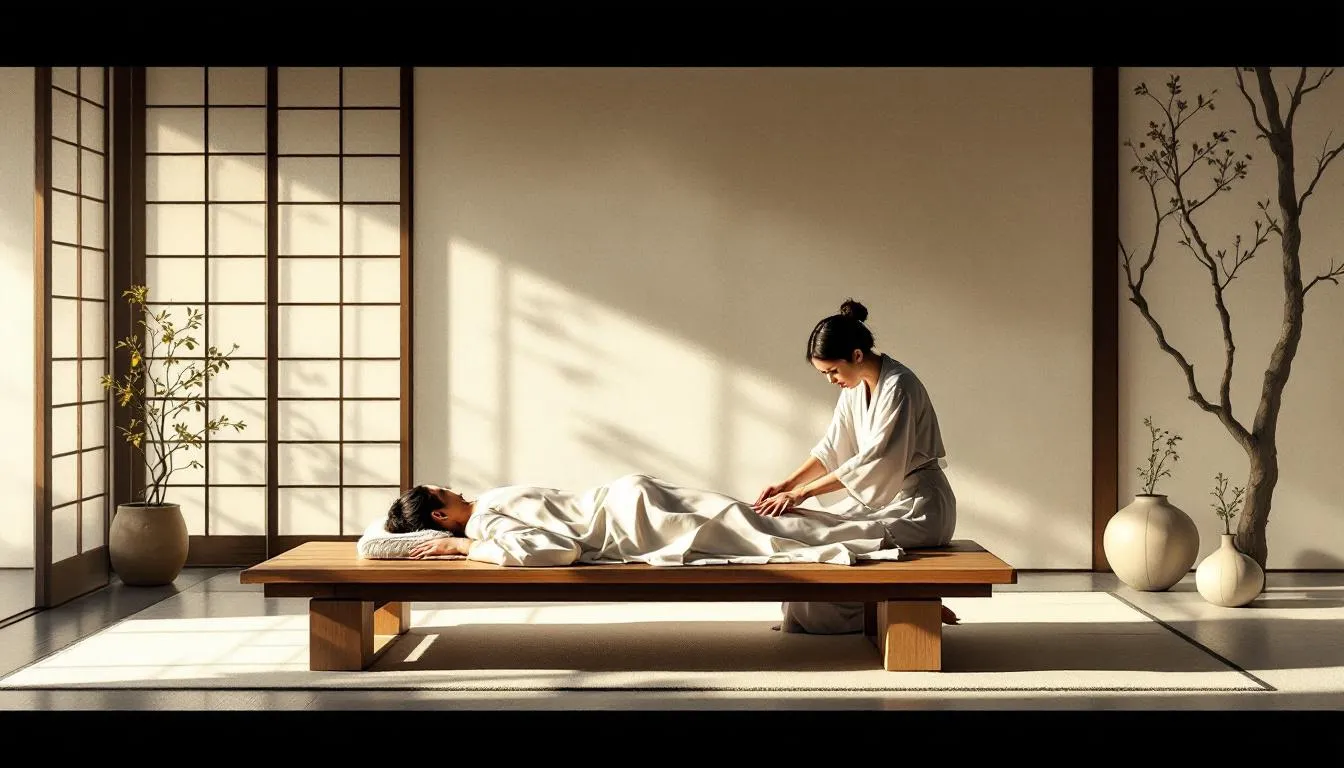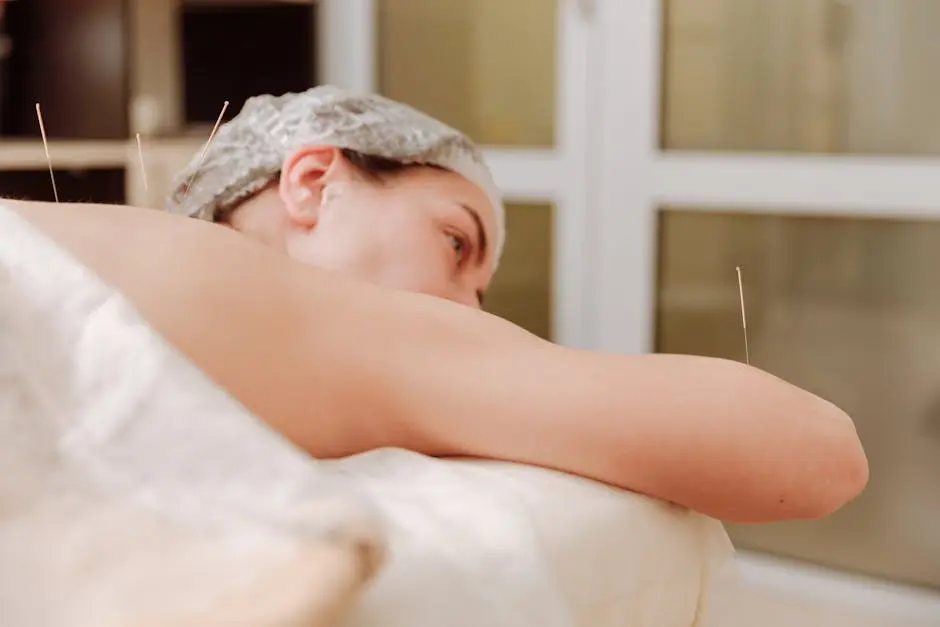How Can San Francisco Acupuncture Help with Chronic Pain Management?
Curious about healing acupuncture? This article explains how this ancient practice relieves pain and boosts well-being. Discover its benefits, how it works, and what to expect in a session.
Key Takeaways
-
Acupuncture, integral to Traditional Chinese Medicine, aims to restore balance of qi by stimulating specific points along the body’s meridians, promoting natural healing and overall well-being.
-
Common conditions treated with acupuncture include chronic pain, anxiety, depression, and various musculoskeletal disorders, highlighting its holistic approach to addressing both physical and emotional health.
-
Choosing a qualified acupuncturist is essential for safe treatment; potential patients should consult physicians, verify credentials, and seek recommendations to ensure a positive experience.
Understanding Healing Acupuncture

Acupuncture is a cornerstone of Traditional Chinese Medicine (TCM), a holistic approach to health that has been practiced for over 3,000 years. The essence of acupuncture involves the insertion of ultra-thin, sterile acupuncture needles into the skin at specific acupuncture points to stimulate the body’s natural healing abilities. According to TCM, these points are crucial for maintaining the balance of qi, or vital energy, which flows through our bodies along pathways known as meridians.
The concept of qi is fundamental in TCM. An imbalance or blockage in the flow of qi can lead to various diseases and health issues. Acupuncture aims to restore the balance of qi by targeting specific acupuncture points, with over 2,000 such strategic points identified throughout the human body. Western practitioners often view these points as:
-
Areas that can stimulate nerves
-
Areas that can stimulate muscles
-
Areas that can stimulate connective tissues These stimulations enhance the body’s natural defenses and promote healing.
Acupuncture’s holistic approach does more than just treat symptoms; it seeks to address the root causes of ailments by restoring balance within the body. This ancient practice, deeply rooted in Chinese medicine, emphasizes the interconnectedness of the mind, body, and spirit, making it a comprehensive treatment for achieving overall well-being and health.
How Healing Acupuncture Works

At the heart of acupuncture is the concept of restoring balance to the body’s energy, known as qi. This energy flows through the body along specific pathways called meridians. Acupuncture aims to influence the flow of qi, ensuring it moves freely and harmoniously through these meridians. When the flow of qi is disrupted, it can result in various health issues, which acupuncture seeks to correct.
The process of acupuncture involves the insertion of fine needles into specific acupuncture points along the meridians. These points are carefully chosen based on the individual’s health condition and the desired therapeutic effect. The stimulation of these points can cause the release of chemicals in the muscles, spinal cord, and brain, which in turn influence the central nervous system. This complex interaction helps to alleviate pain, reduce inflammation, and promote overall health and well-being.
Patients undergoing acupuncture treatments often report a range of sensations, from mild pressure or aching to feelings of relaxation and even energization during and after the sessions. These experiences are a testament to the holistic benefits of acupuncture, not only addressing physical ailments but also enhancing emotional and mental health.
This multi-faceted approach is a hallmark of traditional Chinese medicine and underscores the effectiveness of acupuncture in promoting overall wellness.
Conditions Treated by Healing Acupuncture

Traditional Chinese Medicine attributes a myriad of health benefits to acupuncture, particularly in managing stress and providing pain relief. Acupuncture treatments are widely recognized for their effectiveness in alleviating musculoskeletal conditions such as:
-
arthritis
-
back pain
-
sciatica
-
lower back pain Patients often seek acupuncture to manage chronic pain, finding significant relief and improved mobility after regular sessions.
Beyond physical pain, acupuncture is also beneficial for various emotional and psychological conditions. It has been noted for its effectiveness in treating anxiety and depression, helping individuals achieve a better emotional balance. Women experiencing menstrual cramps, individuals suffering from migraines, and those with chronic conditions like fibromyalgia can also find relief through specific acupuncture treatments. The holistic approach of acupuncture addresses not just the symptoms but the underlying causes, promoting overall well-being.
Many patients have shared personal testimonies of how acupuncture helped them overcome ailments such as chronic fatigue, headaches, and post-injury recovery. These stories highlight the transformative power of acupuncture in improving quality of life and emotional well-being. By addressing both physical and emotional health conditions, acupuncture offers a comprehensive treatment plan for a variety of ailments, proving its versatility and effectiveness in promoting overall wellness.
What to Expect During an Acupuncture Session
Embarking on your acupuncture journey starts with a calm and inviting environment designed to promote healing and relaxation. Typically, a course of 6 to 8 treatments is recommended to achieve the desired therapeutic effects.
Each session provides a unique experience tailored to your specific health needs, encompassing initial consultation, the procedure itself, and the post-treatment effects, along with our comprehensive services.
Initial Consultation and Diagnosis
The initial consultation is a vital step in your acupuncture journey. It allows the acupuncturist to establish a rapport with you and understand your health history and current needs. During this consultation, you’ll discuss any existing health conditions, symptoms, and whether acupuncture is a suitable treatment for you. Western practitioners often interpret acupuncture points as areas that can enhance nerve and tissue stimulation, aiding in diagnosis and treatment planning.
Based on the initial consultation, a personalized treatment plan is crafted to address your specific health issues. This personalized approach ensures that the sessions target the appropriate points, providing the most effective treatment for your condition. Open communication with your acupuncturist during this stage is crucial for a successful treatment outcome.
The Procedure
The acupuncture procedure involves:
-
Careful insertion of very thin needles into specific points on the body.
-
Selection of acupuncture points associated with the body’s meridians based on the individual’s treatment plan.
-
Insertion of needles at varying depths depending on the area being treated.
-
Use of 5 to 20 needles in each session.
Despite the use of needles, acupuncture is relatively painless, although some patients may find certain points to be painful. Key points include:
-
The needles are ultra-thin and designed to cause minimal discomfort; most patients only feel a brief sting upon insertion.
-
Patients are provided with a gown, towel, or sheet.
-
Patients are informed about the general site of the planned treatment to ensure comfort.
The insertion of these sterilized needles stimulates the body’s natural healing processes by influencing the central nervous system and promoting the flow of qi.
During the session, patients might experience various sensations, such as a mild ache, pressure, or even a sense of relaxation. This therapeutic practice not only addresses physical symptoms but also promotes a state of mental and emotional balance, contributing to overall wellness through several modalities. Regular sessions, typically one or two per week, are often recommended to achieve the best results.
Post-Treatment Effects
After an acupuncture treatment, patients often feel a sense of calm and relaxation. It is common to experience an increase in energy or a feeling of being recharged, which can help patients feel energized. Monitoring your symptoms after each session is crucial to determine the effectiveness of the treatment and make any necessary adjustments.
The benefits of acupuncture extend beyond immediate symptom relief. Regular treatments can significantly enhance overall health and well-being, promoting a balanced state of body and mind. Whether it’s relaxation, pain relief, or emotional stability, the positive effects of acupuncture are a testament to its enduring value in holistic health care.
Safety and Risks of Healing Acupuncture

Acupuncture is generally considered safe when performed by a qualified practitioner using sterile, single-use needles. However, like any medical treatment, it does come with some risks. Common minor side effects include bruising, slight bleeding, and temporary discomfort at the needle insertion sites. These effects are usually mild and short-lived.
To ensure a safe acupuncture treatment, it is essential to disclose all your medical conditions and current medications to your acupuncturist. Special considerations are necessary for individuals with specific health issues, such as those with pacemakers or pregnant women, who must consult their acupuncturist to determine the suitability of acupuncture for their conditions.
Taking these precautions allows you to enjoy the benefits of acupuncture while minimizing potential risk.
Complementary Therapies in Oriental Medicine

Acupuncture is often complemented by other therapies in Oriental medicine to enhance its effects and promote overall wellness. One such therapy is moxibustion, which involves the burning of moxa (a type of dried mugwort) to apply heat to specific acupuncture points. This technique is believed to regulate the body’s energy and enhance recovery, providing pain relief and improving overall function without significant side effects.
Cupping therapy is another complementary technique that has gained popularity, especially among athletes. This therapy involves creating suction on the skin, which enhances blood circulation and alleviates pain. Cupping can be performed as dry or wet cupping, with the latter involving slight bleeding to enhance treatment effects. It effectively reduces muscle tension and improves blood flow, making it an excellent recovery tool for athletes and others.
Massage therapy, particularly Tuina, is also used in conjunction with acupuncture. Tuina employs various manipulative techniques to relieve pain, enhance recovery, and restore normal muscle function.
These complementary therapies, including moxibustion, cupping therapy, and massage, work synergistically with acupuncture to promote holistic health and wellness. Together, they represent the comprehensive approach of traditional Chinese medicine in treating the whole person.
Choosing the Right Acupuncture Practitioner
Selecting the right acupuncture practitioner is a crucial step in your journey towards optimal health. Here are the key steps to follow:
-
Consult your doctor before considering acupuncture treatment to ensure it is appropriate for your condition.
-
Once you have the green light, ensure the acupuncturist you choose is licensed and certified.
-
Verify the practitioner’s credentials to confirm they have completed the necessary training and passed relevant certification exams.
Seek recommendations from trusted sources, such as friends, family, or healthcare providers, to find a reputable acupuncturist. It is also wise to interview potential acupuncture practitioners to understand their approach and treatment plans. This process helps you find a practitioner who aligns with your health goals and ensures a positive and effective acupuncture experience.
Client Testimonials
Hearing from those who have experienced the benefits of acupuncture can be incredibly inspiring. Many patients express gratitude for the compassionate care they received, often attributing their recovery to the practitioner’s supportive approach. These testimonials serve as powerful reflections of the positive impact of acupuncture on overall well-being.
Patient experiences often highlight how acupuncture helps restore balance among the mind, body, and spirit. Overall, these stories underscore the transformative power of acupuncture in enhancing quality of life and well-being, providing real-life evidence of its effectiveness.
Cost and Insurance Coverage
The cost of acupuncture treatment can vary widely based on factors such as location, practitioner experience, and session length. Many clinics offer package deals that can reduce the overall cost of multiple sessions. Exploring these options is advisable if you plan on undergoing a series of treatments.
Regarding insurance coverage, some health insurance plans may cover acupuncture, but this often depends on the specific diagnosis and the insurance provider. It is crucial to contact your insurance provider beforehand to confirm if acupuncture is included in your plan.
Additionally, inquire about any necessary referrals or documentation required for helpful insurance reimbursement to avoid unexpected expenses.
Summary
Acupuncture, as an integral part of Traditional Chinese Medicine, offers a holistic approach to health and well-being. By restoring the balance of qi and targeting specific acupuncture points, it effectively treats a variety of conditions, from chronic pain to emotional disorders. The journey through an acupuncture session—from initial consultation and diagnosis to the procedure and post-treatment effects—reveals the meticulous care and personalized approach involved in this ancient practice.
Complementary therapies such as moxibustion, cupping therapy, and massage further enhance the benefits of acupuncture. Choosing a qualified and certified practitioner is essential for a safe and effective experience. Real-life testimonials and detailed information about costs and insurance coverage provide a comprehensive understanding of what to expect. Embrace the wisdom of acupuncture to unlock a path to enhanced health and well-being.
Frequently Asked Questions
How does acupuncture work?
Acupuncture effectively stimulates specific points on the body’s meridians to restore qi flow and release chemicals that positively affect the central nervous system. This process promotes healing and balance within the body.
What conditions can acupuncture treat?
Acupuncture effectively treats conditions such as chronic pain, migraines, anxiety, depression, menstrual cramps, and musculoskeletal issues, including back pain and sciatica. Its broad applicability makes it a valuable option for various health concerns.
Is acupuncture safe?
Acupuncture is generally safe when conducted by a qualified practitioner using sterile, single-use needles. Minor side effects such as bruising and temporary discomfort may occur, but they are usually not serious.
How many acupuncture sessions are needed?
The common recommendation is to undergo 6 to 8 acupuncture sessions to achieve the desired therapeutic effects, though individual needs may vary based on specific conditions and responses.
Does insurance cover acupuncture treatments?
Insurance coverage for acupuncture treatments varies by plan and is typically dependent on the specific diagnosis and provider. It is essential to verify with your insurance provider for details on coverage and required documentation.







